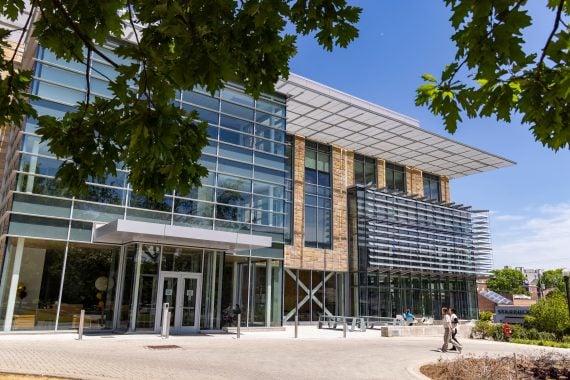See the Duke Fuqua MBA Class of 2027 profile here.
Duke University’s Fuqua School of Business reached gender parity for the first time with its Daytime MBA Class of 2026. Of the 427 new students, 51 percent are women. The school also posted impressive representation of U.S. minorities, seeing 10+ percentages increases in underrepresented students of color and students of color over their MBA Class of 2025.
Associate Dean of Admissions at Duke Fuqua, Shari Hubert, remarks, “I am proud to share that Fuqua received a record-high number of applications, experienced an increase in yield, and for the first time, reached gender parity in our Daytime MBA class. It is fitting that we celebrate reaching gender parity in our incoming Daytime MBA class as Mary Frances Luce, the first woman and alumnus to serve as Fuqua’s dean, begins her interim term.”
Here are some key elements of the profile:
| Women | 51% |
| Countries Represented (by citizenship) | 45 |
| International Students* | 41% |
| U.S. Underrepresented Students of Color | 40% |
| Average Work Experience | 6 years |
*By primary citizenship outside the U.S., does not include dual citizenship.
| Average Undergraduate GPA (Middle 80%) | 3.17-3.89 |
| GRE Verbal/Quant Combined Range (Middle 80%) | 305-330 |
| GMAT Score Range (Middle 80%) | 660-760 |
| Executive Assessment Range (Middle 80%) | 149-161 |
International Students, Women, and Minority Representation
“Beyond making HERstory, we continued to make strides in other areas of our class representation with 40% U.S. underrepresented students of color, 18% first-generation college students, 11% veterans, 37% with partners and families, and 41% international citizens from 45 countries around the world,” Hubert shares with Clear Admit. “While there are many initiatives I could highlight, I was impressed by the increased engagement from our students and alumni. Our admissions team made changes that enabled some members to invest countless hours making phone calls, hosting dinners, and other engagements to connect with prospective students. We held more than 150 diversity-related events as part of this admissions cycle, which would not have been possible without the support of our community.”
Women make up 51 percent of the Duke Daytime MBA Class of 2026, a six percent jump from last year and a record for the school. U.S. Students of Color—U.S. domestic or permanent resident students who identify as African American or Black, American Indian or Alaska Native, Asian American, Hispanic American or Latinx, Native Hawaiian or Pacific Islander, and those who are multiracial or multiethnic—number 56 percent, a whopping 16 percent increase over last year. Historically underrepresented U.S. minority students—U.S. domestic or permanent residents students who identify as African American or Black, Hispanic American or Latinx, American Indian or Alaska Native, Native Hawaiian or Pacific Islander, and those who are multiracial or multiethnic—make up 40 percent of the class, which represents another huge jump of 13 percent over last year. A closer look under Federal reporting guidelines shows 19 percent reporting as Hipanic or Latinx and 17 percent as African American or Black. Thirteen percent identify as Asian American and five percent as two or more races.
The new cohort represents 32 U.S. states and 45 countries. The international student contingent is 41 percent, down six percent from 47 percent last year (this year does not include dual citizenship).
Academic and Professional Background
During their undergraduate years, the middle 80 percent of their GPAs landed between 3.17 to 3.89. Engineering/natural sciences were the most popular majors at 38 percent. Business & accounting followed at 29 percent. Nineteen percent earned degrees in liberal arts and 11 percent in economics. Sixteen percent of students hold advanced degrees and 18 percent of Duke candidates were first-generation college students.
This year’s incoming class maintained the high end of the GMAT scores, with scores ranging from 660 to 760. For those who opted to take the GRE, the combined Quant and Verbal range came in at 305 to 330. Finally, the middle range (80 percent) of scores for students who took the Executive Assessment landed at 149 to 161. The program does not report the overall average GMAT, GRE or EA scores.
Prior to matriculating at Fuqua, the MBA Class of 2026 averaged six years of work experience. Nineteen percent of the class comes from the financial services industry and another 18 percent from consulting. Fourteen percent had worked in tech, followed by 11 percent in health. Seven percent each hailed from government or the non-profit/education fields. Eleven percent served in the military.
“Fuqua has had a long-standing commitment to diversity and inclusion. While it is too soon for us to know which initiatives have had the greatest impact, we are thrilled to see our classes become more diverse and will continue working on it,” Hubert says.









